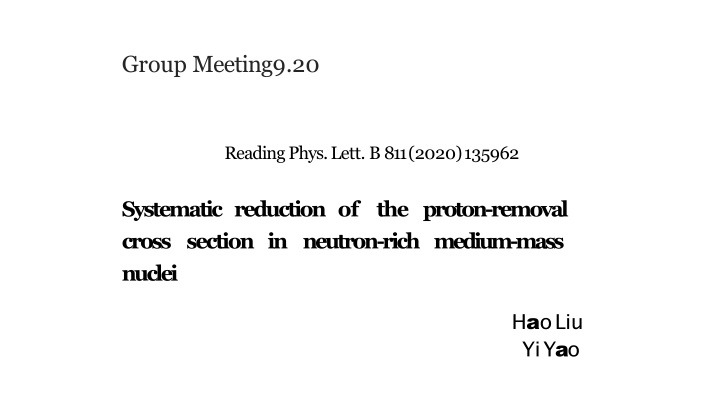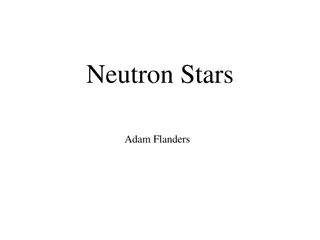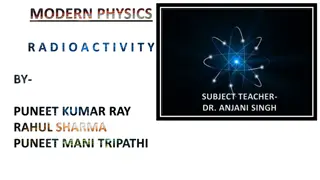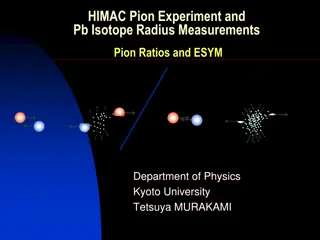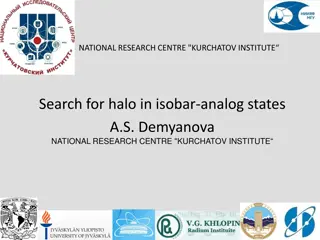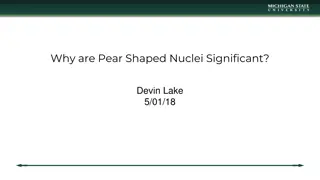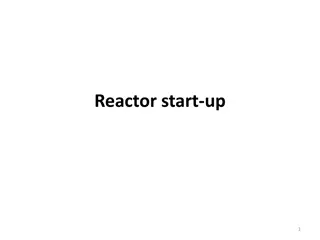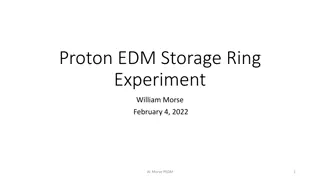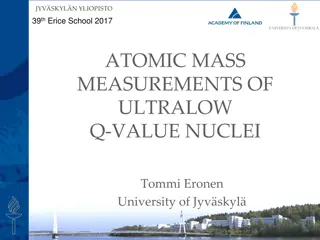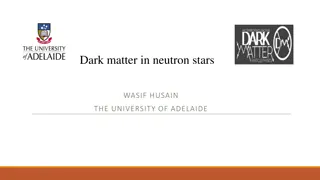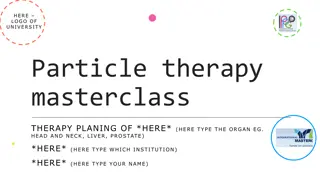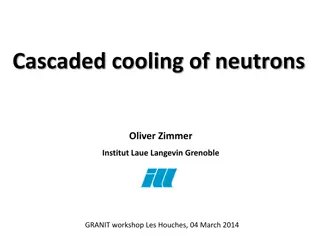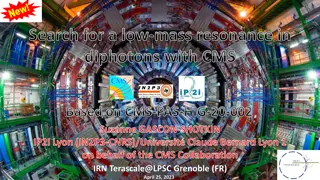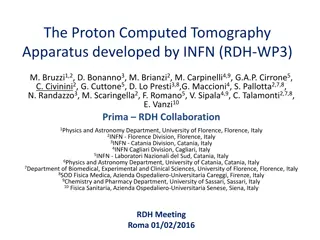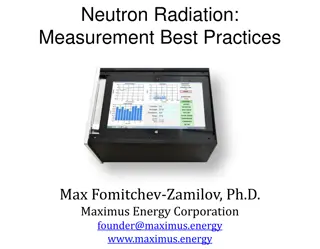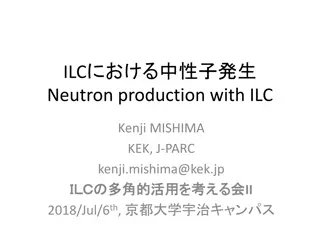Systematic Reduction of Proton-Removal Cross Section in Neutron-Rich Medium-Mass Nuclei
Single-nucleon knock-out reactions in neutron-rich medium-mass nuclei were studied to investigate the reduction of proton-removal cross section. Short-range correlated nucleon pairs, especially protons, were found to impact the probability of single-proton removal processes. Experimental measurements using uranium and xenon beams revealed insights into single-neutron and single-proton removal cross sections, showcasing differences in their probabilities. The results shed light on the influence of neutron-excess on SRC protons and the associated knock-out reactions.
Download Presentation

Please find below an Image/Link to download the presentation.
The content on the website is provided AS IS for your information and personal use only. It may not be sold, licensed, or shared on other websites without obtaining consent from the author.If you encounter any issues during the download, it is possible that the publisher has removed the file from their server.
You are allowed to download the files provided on this website for personal or commercial use, subject to the condition that they are used lawfully. All files are the property of their respective owners.
The content on the website is provided AS IS for your information and personal use only. It may not be sold, licensed, or shared on other websites without obtaining consent from the author.
E N D
Presentation Transcript
Group Meeting 9.20 Reading Phys. Lett. B 811 (2020)135962 Systematic reduction of the proton-removal cross section in neutron-rich medium-mass nuclei HaoLiu YiYao
Introduction Single-nucleon knock-out reactions at intermediate and high energies are a widely- used tool Existence of short-lived correlated nucleon pairsThose short-range correlated (SRC) nucleon pairs, The number of protons in SRC pairs increases with neutron-excess in the nucleus We introduce a quenching factor defined as the ratio between measured single- nucleon knock-out cross sections and calculated ones, Transfer [18] and quasi-free, (p, 2p) or (p, pn), nucleon removal [19,20] d o not show any clear dependence of the quenching of the spectroscopic strength as function of the neutron excess for the same nuclei. The knock-out of a SRC proton from a neutron-rich nucleus would cause the paired nucleon, mostly a neutron, to recoil and be ejected as well [10]. Therefore, the increase of the number of SRC protons with the neutron excess [12], will reduce, accordingly, the probability of single-proton removal processes.
Experiment and measurements 950A MeV 238U and 1200A MeV 132Xe imping on a 1 g/cm2 beryllium target to produce large isotopic chains of medium-mass nuclei. Two independent magnetic spectrometers.The first section was used to separate the medium-mass nuclei produced in the target located at the entrance of the FRS.An additional 2591 mg/cm2 beryllium target was placed at the intermediate-image plane to induce nucleon-removal reactions. They were all identified by the same B -ToF- E method.
Experiment and measurements This fig shows the identification matrices obtained with the 238U beam for a magnetic tuning of the first section of the FRS centered on 132Sn (upper panel) while the setting of the second section was centered on 131Sn and 132In (lower panel). In this experiment they measured 72 single-neutron removal and 13 single- proton removal cross sections, integrated over bound excited states, although in this letter we just report the results for isotopes of tellurium, antimony, tin, and indium around N = 82.
This fig shows the single-neutron removal cross sections (upper panel), and the single- proton removal cross sections (lower panel) For N = 84 projectiles, the single-neutron removal produces with a large probability N = 83 residues with a hole state in the 2?3 2 or the 1 11 2 orbital, below the N = 82 shell gap, and one neutron occupying the 2?7 2 orbital above the shell gap. Single-proton removal cross sections, shown in the lower panel in Fig. 3, are also very similar for all isotones until N = 83 where they drop. Another remarkable fact is, that single-proton removal cross sections are about an order of magnitude smaller than those for single- neutron removal.
This fig shows the single-neutron removal cross sections (upper panel), and the single- proton removal cross sections (lower panel) For N = 84 projectiles, the single-neutron removal produces with a large probability N = 83 residues with a hole state in the 2?3 2 or the 1 11 2 orbital, below the N = 82 shell gap, and one neutron occupying the 2?7 2 orbital above the shell gap. Single-proton removal cross sections, shown in the lower panel in Fig. 3, are also very similar for all isotones until N = 83 where they drop. Another remarkable fact is, that single-proton removal cross sections are about an order of magnitude smaller than those for single- neutron removal.
This fig shows the single-neutron removal cross sections (upper panel), and the single- proton removal cross sections (lower panel) For N = 84 projectiles, the single-neutron removal produces with a large probability N = 83 residues with a hole state in the 2?3 2 or the 1 11 2 orbital, below the N = 82 shell gap, and one neutron occupying the 2?7 2 orbital above the shell gap. Single-proton removal cross sections, shown in the lower panel in Fig, are also very similar for all isotones until N = 83 where they drop. Another remarkable fact is, that single-proton removal cross sections are about an order of magnitude smaller than those for single- neutron removal.
Single-neutron (upper panel) and single- proton (lower panel) removal cross sections for different tin isotopes measured in this work (dots) and by other authors. Lines represent standard model predictions (dashed lines) and predictions including a phenomenological description of the impact of SRC nucleon pairs (solid line).
